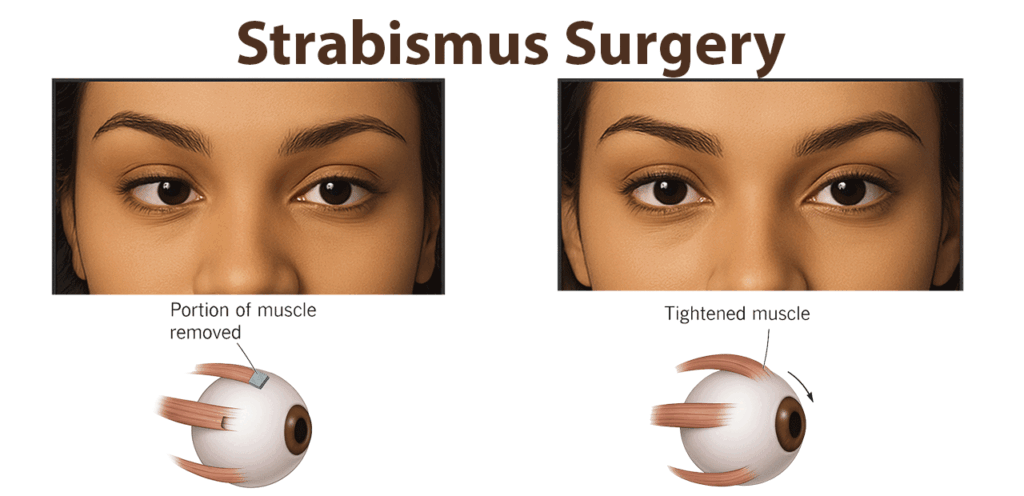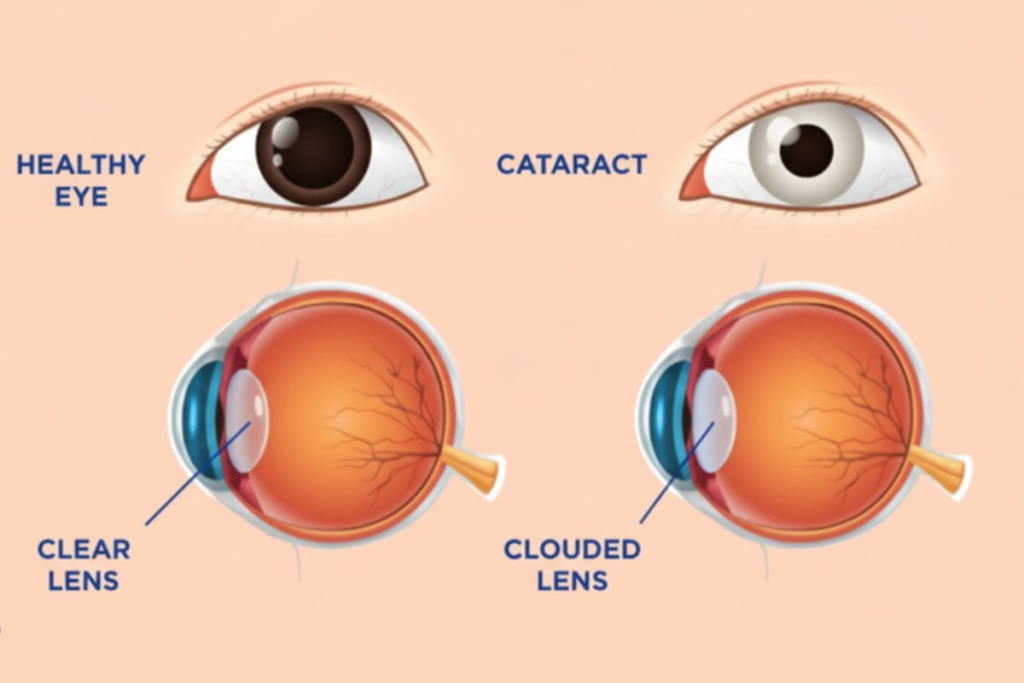Strabismus, commonly known as crossed eyes, is a condition where the eyes do not align properly, leading to issues with binocular vision and depth perception. Strabismus surgery aims to correct this misalignment by adjusting the eye muscles, improving both function and appearance. This procedure is one of the most effective ways to treat moderate to severe strabismus in both children and adults.
Who Needs Strabismus Surgery?
Strabismus surgery is typically recommended for individuals whose eye misalignment has not responded to non-surgical treatments such as glasses, vision therapy, or medications. Common conditions requiring strabismus surgery include:
- Esotropia – Inward turning of one or both eyes toward the nose.
- Exotropia – Outward turning of one or both eyes.
- Hypertropia – One eye being positioned higher than the other.
- Hypotropia – One eye being positioned lower than the other
- Paralytic Strabismus – Eye misalignment caused by nerve damage affecting muscle movement.
- Restrictive Strabismus – Scar tissue or mechanical restriction affecting normal eye movement.
In some cases, patients with conditions such as stroke, traumatic brain injury, or neurological disorders may develop strabismus and require surgery. Surgery co-management with optometrists ensures a comprehensive approach, optimizing pre- and post-operative care.
Types of Strabismus Surgery
Several surgical techniques are used to correct strabismus, depending on the severity and type of misalignment. These include:
- Recession Surgery – The surgeon detaches an overactive eye muscle and repositions it further back on the eyeball to weaken its effect.
- Resection Surgery – A portion of a weak eye muscle is removed to shorten and strengthen it.
- Adjustable Suture Surgery – Used mainly for adults, this procedure involves adjusting the muscle positioning after surgery to fine-tune eye alignment.
- Strabismus Correction with Botulinum Toxin (Botox) – In some cases, Botox is injected into the muscle to temporarily weaken it and improve alignment.
Strabismus can sometimes be associated with lazy eye (amblyopia), a condition in which the brain favors one eye over the other due to poor vision development. While strabismus surgery does not directly treat amblyopia, correcting misalignment may help improve binocular vision. Additional treatments such as patching therapy, atropine eye drops, or vision therapy may still be required.
Preparing for Strabismus Surgery
Medical Evaluation
- A detailed medical history and eye examination will be conducted.
- The surgeon will evaluate muscle strength, vision, and misalignment severity.
- Any previous surgeries, allergies, and medications will be reviewed.
Pre-Surgical Instructions
- Patients must refrain from eating or drinking after midnight before surgery.
- Certain medications, like blood thinners, may need adjustments.
- Arrangements for transportation should be made as this is typically an outpatient procedure.
The Strabismus Surgery Procedure
Anesthesia
- Children: Typically receive general anesthesia.
- Adults: Can have either general anesthesia or local anesthesia with sedation.
Surgical Techniques
- Small incisions are made in the conjunctiva (the clear covering of the white part of the eye).
- The eye muscles are repositioned, shortened, or weakened, depending on the specific misalignment.
- Dissolvable stitches are used.
- If adjustable sutures are used, fine-tuning of eye alignment is done a few hours post-surgery.
The whole process takes 45 minutes to 1.5 hours.
Recovery Process After Strabismus Surgery
Immediate Postoperative Care
- Before getting discharge, patients get checked up to monitor the condition
- Mild discomfort, redness, and temporary double vision are common but usually subside within a few days.
Home Care Instructions
- Use prescribed antibiotic and anti-inflammatory eye drops.
- Avoid rubbing the eyes and engaging in strenuous activities for at least a week.
- Most patients resume normal activities within a few days, but full recovery takes about six to eight weeks.
Advantages and Risks of Strabismus Surgery
Advantages
- Improves eye alignment and depth perception.
- Enhances both vision and physical appearance.
- Boosts self-confidence and social interactions.
Risks
- Infection (rare, but possible).
- Overcorrection or undercorrection, requiring additional surgery.
- Temporary or permanent double vision.
- Anesthesia-related risks.
Frequently Asked Questions
Q: Is strabismus surgery painful?
A: Most patients experience only mild discomfort following the procedure. Their eyes may feel sore, scratchy, or irritated for a few days. Over-the-counter pain relievers like acetaminophen or ibuprofen are typically enough to ease any discomfort. Additionally, your doctor may suggest lubricating eye drops to relieve irritation.
Q: How long does it take to recover?
A: Full recovery typically takes six to eight weeks, but most patients can resume normal daily activities, such as work or school, within a few days. Some temporary side effects, such as redness, swelling, or double vision, may occur but usually improve within a few weeks.
Q: Can strabismus return after surgery?
A: While strabismus surgery is effective for most patients, there is a possibility that the condition could return over time. In some cases, additional surgery or vision therapy may be needed to achieve the best results. Regular follow-up visits with an ophthalmologist can help monitor eye alignment and detect any changes early.
Take the First Step Toward Clearer Vision
If you or your loved one is struggling with strabismus or lazy eye, schedule a consultation at Vision Gallery. Our expert ophthalmologists provide personalized care and advanced treatment options to help you achieve optimal eye health.
Strabismus surgery is a highly effective procedure that can correct eye misalignment, improve vision, and enhance quality of life. Understanding what to expect before, during, and after the surgery can help ease concerns and ensure a smooth recovery. If you or a family member needs professional eye care, consider visiting Vision Gallery for expert guidance and treatment.


